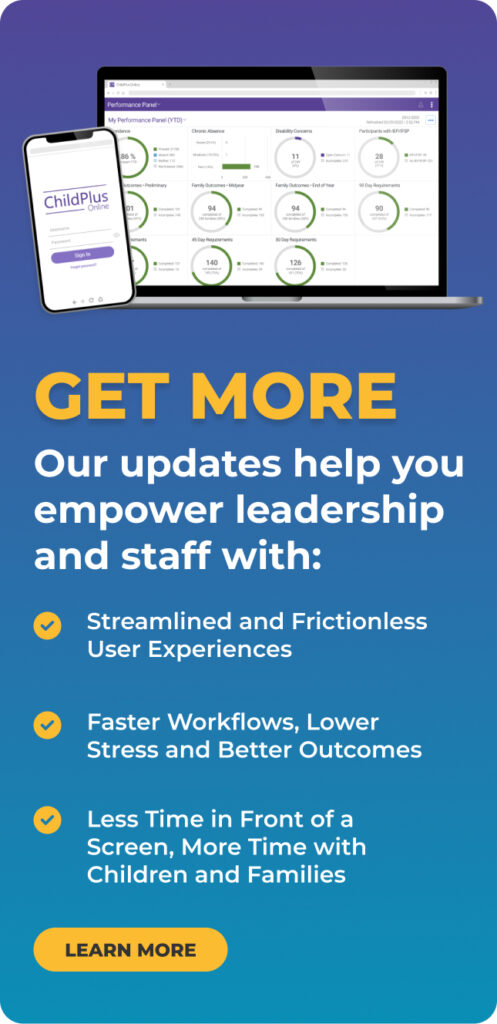
You’ve captured observations and finalized the DRDP©. Now what?
Assessing your children is an ongoing process and not one that should be taken lightly. It’s an important part of the learning process. How else would you know a child’s strengths and weaknesses without documenting their learning with a child assessment?

An assessment cycle never stops. From the moment you capture your first assessment, to facilitating learning experiences, teachers refer back to assessment details. They help teachers know what a child’s strengths are and how to develop individualize lesson plans.
Family engagement is a collaborative and strength-based process. Conferencing with parents is a way to build a positive and goal-oriented relationship. When conferencing, discuss their child’s assessment results, focusing on each child’s individual strengths. The Office of Head Start (OHS) encourages agencies to use a strength-based approach when sharing information with parents, whether you are in a center-based, home-based, or family child care setting.
According to OHS Standards 1032.33.b:
A program must regularly use information from paragraph (b)(1) of this section along with informal teacher observations and additional information from family and staff, as relevant, to determine a child’s strengths and needs, inform and adjust strategies to better support individualized learning and improve teaching practices in center-based and family child care settings, and improve home visit strategies in home-based models.”
With ChildPlus’ DRDP© reports, such as the Parent Report, parents can discover the best way to support learning and development of their child and their strengths. The Parent Report details the child’s developmental progress over multiple assessments in an easy-to-understand language. It helps families develop functional and meaningful learning goals, and also the roles the parent and teacher will address.
Another way to encourage parent engagement is by reminding them to save these dynamic reports, like the Parent Report, for when the child is older. That way, the parent can show the child their developmental progress as they grow.
After meeting with the parent, you will address the learning goals for each individual child. You will be able to use the Group Detail Report to develop ELOF-aligned lesson plans from any curriculum based on each child’s strengths. Teachers and parents will facilitate learning experiences based on the strengths found on the DRDP©.
Then you start all over again. Capturing another observation starts the cycle all over again in assessment-driven instruction.
It’s always nice when you are able to show parents how much their child has grown since the beginning of the school year to the end. For teachers, that’s the ultimate reward.

Comments are closed.